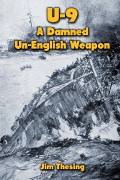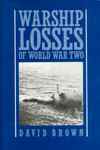Fly West
Southall, Ivan
1974, Angus and Robertson, London
ISBN 0207130027
175 pages
| Type. | Operational history, for children |
| Pros. | Rich, evocative, mythic account drawn from author’s experiences; gives an Australian perspective on the Atlantic Campaign. |
| Cons. | Excludes life ashore, especially adult aspects, being a junior version. |
| Rating. |  |
I first read this book 20 years ago, in primary school, and its mythic description of the author’s experiences, in winning prose, from pilot training through active service to posting to write the squadron history, is just as effective today. He served as a member of 10 Sqn RAAF and then 461 Sqn, after the former was divided. In 1942 he underwent pilot training, and moved onto Short Sunderland flying boats, the large long-range ASW aircraft which themselves were held to have mythical powers - at least by the Germans. They were slow and lumbering, large and elegant; large enough to have not just a galley stove, but a toilet, a toilet in a room - with a door! They did not have the cannons, armour plate, or other wonders ‘the enemy’ wrote of. They had the standard short-range .303 Browning machine guns so ineffective compared to German cannon shells, and a structure of “duralumin thin as card.” They did have long range, if not as good as the later Catalinas and Liberators, and they could land on calm water to rescue seamen, or downed aircrew. They were often landed, at great risk, when it wasn’t calm. They were majestic and romantic the way the Battle of the Atlantic was not.
To his credit Southall was not romantic about it. His view was mythic, but he did represent operational life in RAF Coastal Command as a blend of tedium, fear, risk and action. There was no glory, only a difficult, dangerous and worrying job, done at a distance from home, in an unforgiving environment, where the weather and the aircraft’s own complexity were as great or greater a risk than the enemy.
Southall narrated these Coastal Command myths effectively for children: the long hours, dictated by the range of the aircraft and the need to cover convoys as far out as possible. There was continual risk of mechanical trouble, where life hung on faith in the strength of individual fuel and oil lines. The loss of one could mean an even slower trip home through zones patrolled also by enemy fighters, or ditching hundreds of miles out with only rubber dinghies between the crew and the ocean. Rescue was possible only if someone heard your SOS, and could be spared, when the weather made it safe. Rescues were made and are one highlight of the story, the Coastal Command equivalent of seamen’s ‘lifeboat literature’. As in other wars and places, aircrew went to great lengths and risks to recover seamen and aircrew, occasionally wrecking their own aircraft and killing their own crewmates in the attempt.
Southall also described the dangers from U-Boats and enemy aircraft, including a few famous events, with the names involved. One is the remarkable fight between a Sunderland and no less than eight Ju-88 fighter-bombers, any one of which had more speed and better guns than the flying boat. The Sunderland not only made it to base, albeit written off immediately, but shot down three and damaged the rest. Over it all is the unending tension. The stress of freezing days, week after week, combined with the uncertainty of the campaign’s progress, and the contrasting warmth and comfort of billets, messes and leave, must have been tremendous. Like so many other aircrews who achieved amazing things, the crew who fought off the Ju-88’s vanished on a routine patrol a few months later.
Amid all this is the Atlantic Battle itself, the cause of it all, the scale and the seriousness of it dominating the text. Convoys, escorts, trade, action are detailed brilliantly, making the squadron experiences part of the Atlantic Battle, not mere setting for its episodes. Here too are the personnel of the squadron, Englishmen, Scots, Welsh and Irish, Australians and New Zealanders, Canadians and South Africans and Rhodesians, “men from all parts of the empire”. The stories are immensely personal, these are real crews, differentiated men. Not only are their names and appearances present, but also their thoughts: what they felt seeing a ship, or a U-Boat, or a tiny yellow dinghy far below. Other aircraft, ‘ours’ or ‘theirs’, in and out of cloud, welcome or unwelcome. It is at once an operational, a technical, a personal, and a psychological account. It feels so much more than a pure squadron history.
Southall did largely exclude women, and life ashore, partly because it wasn’t the story. It was also because shore life consisted of even more tedium than patrols over the ocean, mixed with carousing and drinking and relaxing, the inevitable letting off steam which was the antidote to the boredom and terrible stress of operations. This was presumably regarded as not suitable for children. It did on the other hand avoid the inevitable tales of chatting up girls and dating WAAFs and the usual rounds of masculinist achievement. When Southall talked about women, it was in regard to the way men excluded emotion from their lives, as he put it “kept their spirits out of view.” They chased women, and danced and dined them relentlessly, but he wasn’t romantic about that either. He was honest about being dishonest with girls: it was “a game of set procedures...of poses and posturing.” That was part of being in uniform, being aircrew, keeping the tension and the fear where others couldn't see it. Life was impossible otherwise.
By excluding stereotypical elements, Southall enhanced what he left in; he did not compromise his work with the same old material others had used. He focussed on the flying, and on the fear and risk, the chill of the sea, because that was what had defined the experience for him, and what he needed to pass on. This was why stories became mythic. They contained only what was vital, meaningful, the essence of the experience. Mere stories about pulling girls, or stunts after drinking too much, were not.
This is perhaps a result of writing this so long after the event; an older man sees things differently. Especially, in Southall’s case, after becoming a famous writer of children’s’ books, with fifty in print in 17 languages when he retired.
His story was thus mythic in that it excluded some things and emphasised others, but this did not make it false or incorrect. Any myth and any history excludes some and includes others. An operational history would concentrate on the patrols and the successes of U-Boat sinkings and survivor rescues, to the detriment of station and social life. A technical account would exclude these in favour of the use of depthcharges, radar, navigational aids. As with so many great works, it was in the blending that Southall succeeded. He managed to include what counted, for the campaign, and for himself, and in the delightful ease and richness of his prose, do the campaign, the events, themes, men and the aircraft, justice. This is a truly effective, individual, account.
The reviewer welcomes your comments on this review.
Review written by Ian Campbell, Launceston, Tasmania.
Published on 13 Sep 2002.
Return to our main review page.



